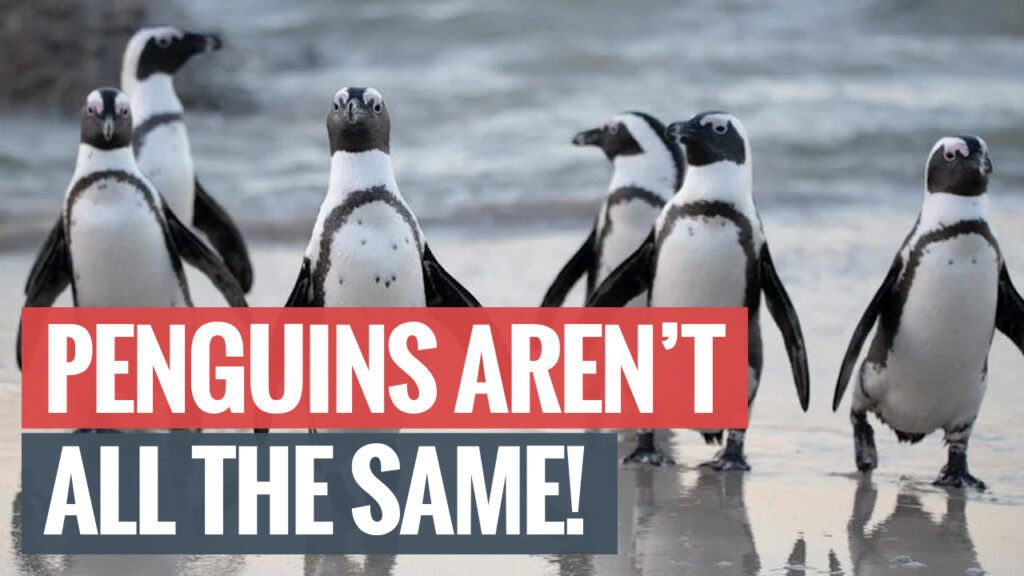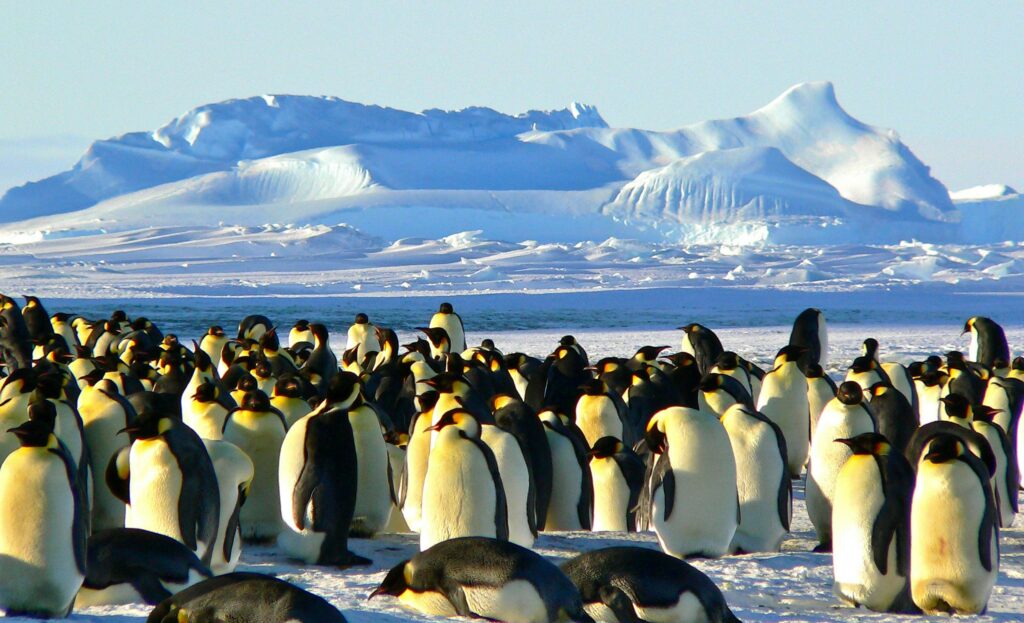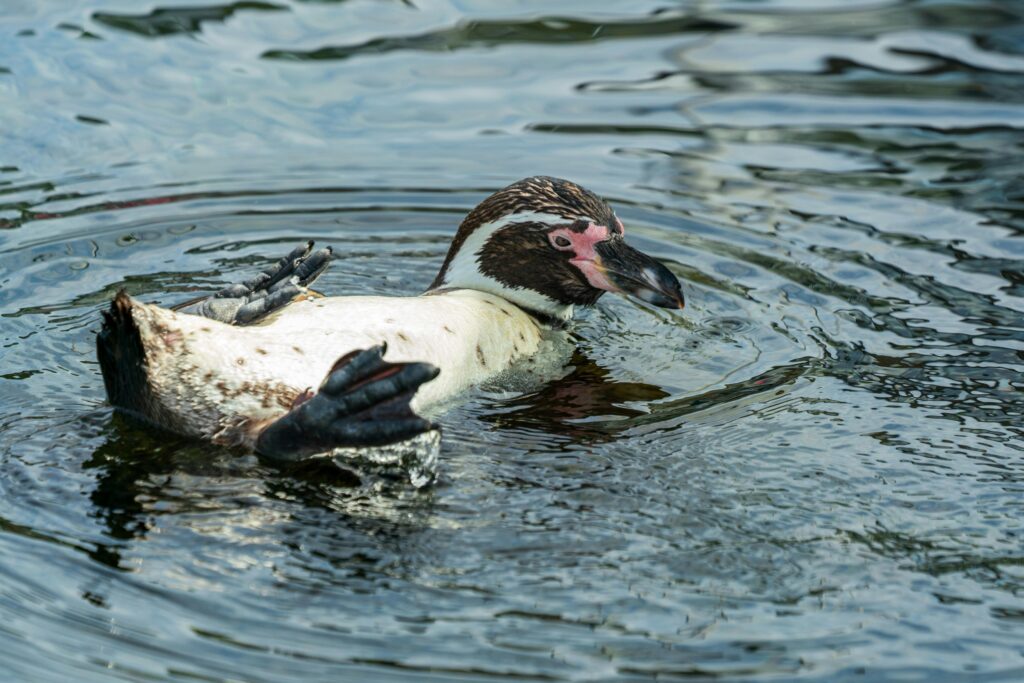Imagine standing on an endless stretch of Antarctic ice, the wind howling around you, the horizon shimmering in the cold sun. Surrounding you are thousands of penguins, bustling, preening, waddling, and yet—not a single word is spoken. Despite the silence, an intricate conversation is taking place, rich with meaning and emotion.
Penguin communication is a masterclass in nonverbal expression. In the harsh, noisy environment they call home, relying solely on sound would be impractical. Instead, they have evolved an extraordinary array of gestures, postures, and subtle movements that allow them to thrive as social creatures. Today, we’ll dive into the silent world of penguins, uncovering how they “talk” without uttering a sound.
The Power of Posture in Penguin Communication
One of the most prominent tools in a penguin’s communicative arsenal is body posture. A penguin standing tall with its chest puffed out and flippers slightly extended is making a clear statement: confidence, dominance, and readiness. Conversely, a lowered head, flattened feathers, and tucked-in body signal submission or a desire to avoid conflict.
In densely packed colonies where thousands of individuals live side by side, these body signals are essential. They prevent constant fighting and maintain a fragile peace among neighbors. By reading each other’s body language, penguins navigate social hierarchies without needing physical confrontation.
Courtship: The Dance of Love
During breeding season, penguins put on some of the most heartwarming displays of nonverbal communication in the animal kingdom. Male penguins often engage in elaborate courtship rituals to attract a mate. These dances can include bowing, neck stretching, pebble offering, and synchronized movements.
In Adélie penguins, for example, a male will present a carefully chosen pebble to his potential mate. This silent gift is rich with symbolism: “I am a capable partner; I can build a strong nest for us.” If the female accepts, she will join him in adding pebbles to their nest, a quiet agreement to start a life together.
Such displays exemplify the beauty of penguin communication during courtship, blending sincerity with silent elegance.
Eye Movements and Head Tilts
Penguins also communicate through eye contact and head movements. A direct stare can signal a challenge, while slow blinking or avoiding eye contact can convey submission or calmness.
Emperor penguins, famous for their monumental breeding journeys, use subtle head tilts and eye movements to identify their chicks among thousands. A parent penguin may tilt its head slightly while calling softly, allowing its chick to recognize it by both sound and sight—a beautiful demonstration of multi-sensory communication.
This nuanced penguin communication ensures that even amidst the chaos of a busy colony, familial bonds remain unbroken.
Flipper Signals and Touch
In the penguin world, a flipper is not just for swimming; it’s a versatile tool for communication. Penguins often flap their flippers to show excitement, irritation, or to signal a warning. In more affectionate moments, they gently tap each other with their flippers or nuzzle with their beaks.
These tender gestures serve multiple purposes: strengthening pair bonds, calming anxious individuals, and establishing trust within groups. In a world where survival often depends on group cooperation, these silent reassurances are vital elements of penguin communication.
The Role of Vocalizations (When Necessary)
Although our focus here is on nonverbal communication, it is worth noting that penguins do use vocal sounds when precision is needed—such as identifying mates or chicks in a crowded colony. However, even these vocalizations are often accompanied by body language cues: head movements, flipper gestures, or synchronized displays.
Penguin communication is therefore multi-modal, blending sound with movement to create a language uniquely suited to the harsh Antarctic environment.
Silent Stories on Ice
Picture a father emperor penguin, standing guard over a precious egg through the brutal Antarctic winter. He doesn’t shout or call for help. Instead, he communicates his resilience, patience, and determination through his stillness, his careful balance, and his unwavering presence.
Nearby, young penguins huddle together for warmth, gently shifting and pressing against each other—a choreography of survival taught and refined over generations without a single spoken word.
These silent stories speak volumes about penguin life: tales of endurance, loyalty, love, and the fierce will to survive against all odds.
Lessons for Us
Penguins teach us that communication is far more than words. A glance, a gesture, a posture—all can carry profound meaning. In a world where noise often overwhelms true connection, penguins remind us that sometimes, the most powerful messages are conveyed in silence.
Next time you watch a penguin fluff its feathers, nudge a companion, or tilt its head just so, remember: you are witnessing a conversation millions of years in the making—a timeless example of penguin communication at its finest.




